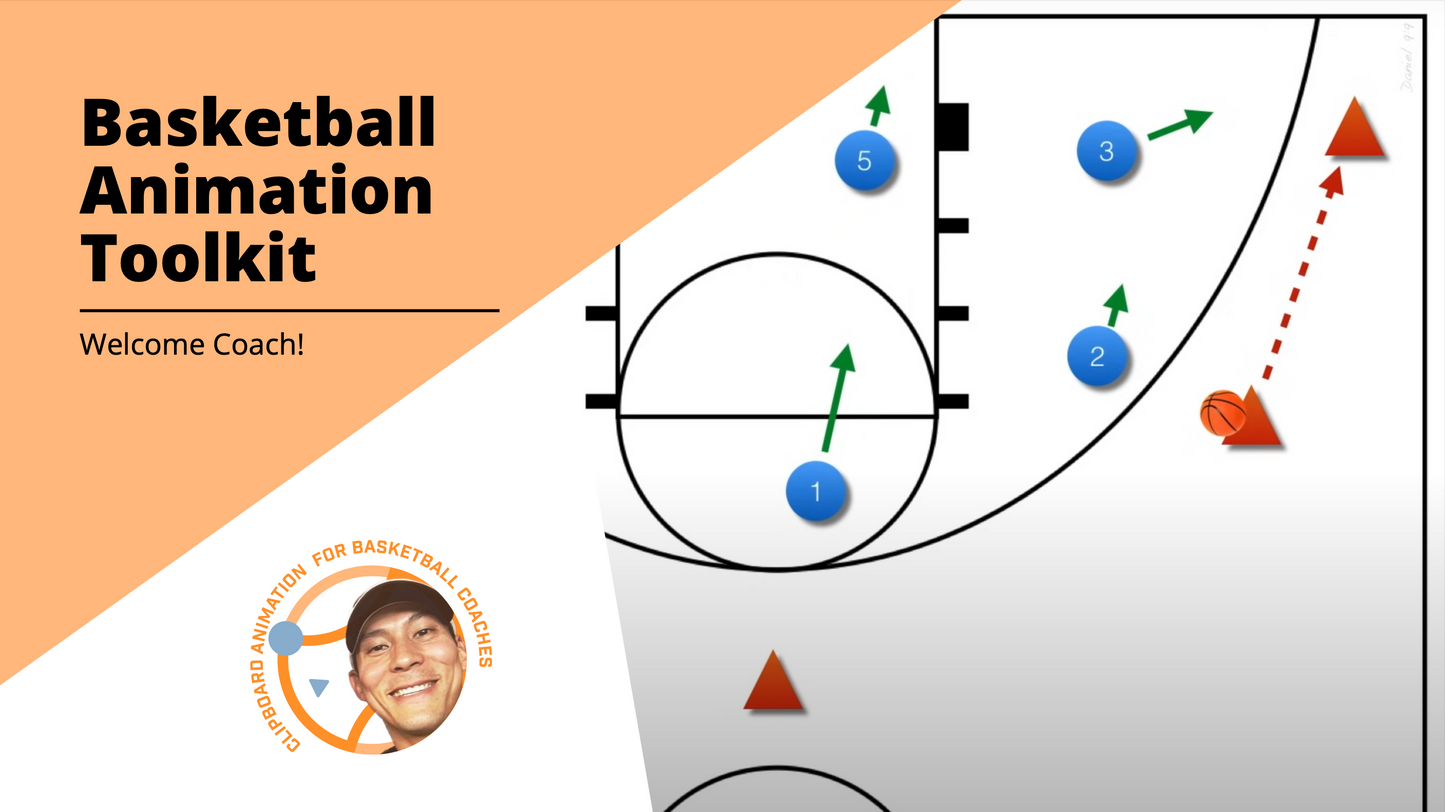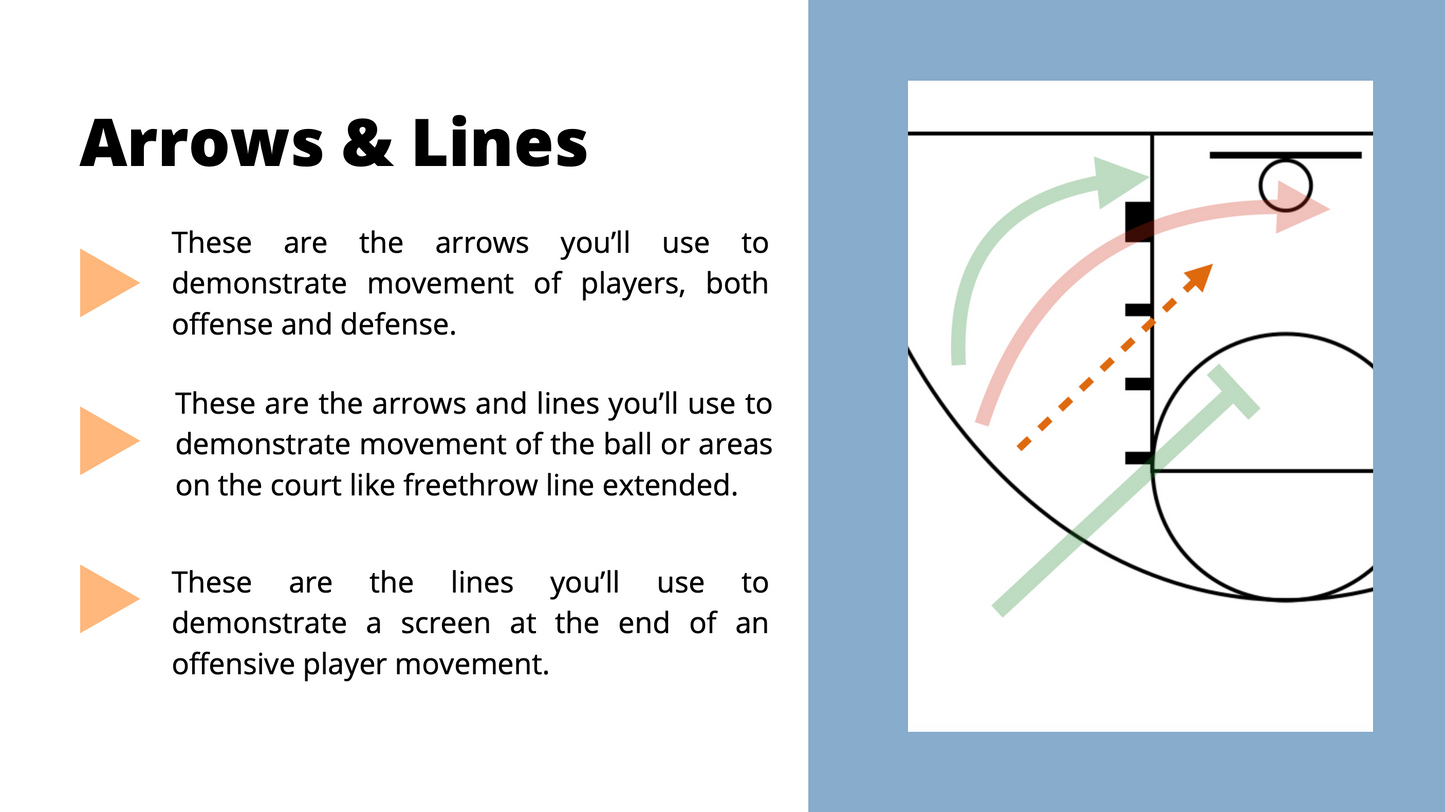
Mastering the 1-2-1-1 "Diamond" Full-Court Zone Press
Share
When it comes to full-court pressure defense in basketball, the 1-2-1-1 "Diamond" Zone Press can be a real game-changer. If your team lacks experience and talent, but has a boat load of speed, hustle and smarts, you should be running some sort of full-court press - especially the 1-2-1-1 zone press. It’s designed to force turnovers, disrupt offensive flow, and create scoring opportunities. Here's a detailed breakdown of how to implement it, avoid common pitfalls, and perfect it through drills.
What is the 1-2-1-1 Zone Press?
The 1-2-1-1 defense is a full-court press that sets players in a diamond-shaped formation:


- One player in the front applies immediate pressure on the inbound pass and on-ball pressure once the ball is inbounded, forcing to the sidelines.

- Two wing players form the next line of defense, focusing on trapping the ball handler along the sideline.

- One player anchors the middle, anticipating passes and plugging gaps.


- The final player, stationed at the back, provides safety against long passes or quick breaks, always staying a low as the farthest opponent down the court.


This formation is about more than just positioning; it’s a coordinated effort that thrives on teamwork, communication, and speed.
Key Objectives of the Diamond Press
The primary goal of the 1-2-1-1 is to force mistakes; it is NOT to get steals. Whether it's rushing the ball handler, cutting off passing lanes, or creating a double-team trap, this press puts your opponents under constant stress and hurried decision making. By funneling the ball to the corners or sidelines, defenders can exploit those confined spaces to trap and intercept errant passes.
Additionally, the back player plays a pivotal role in safeguarding against long passes, ensuring that your team doesn’t concede easy points during the press.
Breaking Down the Responsibilities
Each player's role is integral to the success of the press:
- The Front Defender: This player pressures the inbound pass, aiming to dictate where the ball goes. Their primary objective is to steer the ball handler into a corner or sideline trap.
- The Wing Defenders: Positioned slightly behind the top defender, these players are the engines of the trap. As the ball moves, they converge quickly to box the ball handler in, making it difficult for them to pass or dribble out of trouble.
- The Middle Defender: The middle player serves as the eyes of the defense, reading the offense and anticipating passes. Their job is to intercept or challenge any attempts to break the press with passes to the middle and down the sideline.
- The Back Defender: As the last line of defense, this player ensures that long passes don’t lead to easy baskets. They need to be quick and ready to rotate back into half-court defense if the press is broken.
3 Common Mistakes and How to Avoid Them
While the 1-2-1-1 press is highly effective, it requires precision and discipline to execute. Here are three common mistakes and how to address them:
- Overcommitting: Defenders sometimes chase the ball too aggressively, leaving gaps in the press. Train players to maintain spacing and trust their teammates to execute traps.
- Poor Traps: A trap loses its effectiveness if the defenders leave space for the ball handler to escape. Focus on closing off angles and positioning players to force turnovers.
- Neglecting the Long Pass: If the back player isn’t alert, an opposing team can capitalize on quick outlet passes. Ensure your last defender stays vigilant and reactive.
Drills to Master the 1-2-1-1 Press
To perfect this zone press, incorporate drills into your practices that emphasize speed, rotation, and communication:
- Trap and Rotate Drill: Set up the press and simulate offensive movements to train your players on trapping effectively and rotating quickly.
- Intercepting Passes: Run drills where the middle player anticipates and intercepts passes, reinforcing their role as the disruptor.
- Back Defender Reaction Drill: Practice quick decision-making for your back defender to ensure they’re ready for fast breaks.
Why Use the 1-2-1-1 Zone Press?
The "Diamond" Zone Press can shift the momentum of a game, especially against teams that have few or no ball handlers. It’s particularly effective in youth and high school basketball, where players may not have the composure or court awareness to navigate high-pressure situations.
This defense not only helps your team increase the number of possessions in a game, but also builds mental toughness, discipline, and communication skills. Players learn to trust one another and work cohesively to achieve a common goal.
Final Thoughts
Implementing a full-court press may sound intimidating, but my philosophy is that you can always rely on your defense when your having an off shooting day. There was a sign posted in my high school coaches room that read, "If you score a lot, you may win. If your opponent doesn't score, you'll never lose."
If you’re ready to learn and start implementing the 1-2-1-1 zone press, check out my YouTube video that features detailed animations on running this press:
"How to Run a 1-2-1-1 "Diamond" Zone Press"
Want to create your own basketball play animations? My Animation Tool Kit is the perfect starting point. Ready to take it further? My DIY course will teach you how to animate plays and bring your coaching strategies to life. Elevate your team's offense today!




